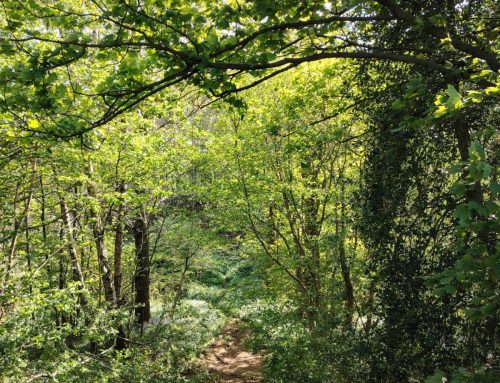Wednesday 21st December marks the Winter Solstice. However, not many of us are aware of what this means and it’s significance. To enlighten us Touchstone IAPT CBT therapist Paul P has written this wonderfully witty piece to bring attention to this time of reflection. Enjoy and happy solstice one and all.
Winter Solstice. Aren’t they lovely words?
They make me think of Bond films; of crisp snow-capped mountains, skis and white pussy cats.
I can almost hear Bassey belting it out. ‘SOLSTICE der der der’.
Yet the word ‘Solstice’ is apparently unrelated to Bond. Instead, it derives from the Latin word ‘Solstitium’, a combination of the Latin word for Sun; Sol and the verb to stand; Sistere.
For those that pay attention to these things, the day when the Sun appears to ‘stand still’ occurs twice a year, in June and then in December.
Writing in the Telegraph, Solstice expert Noah T Hall explains that: on the day of the solstice the Sun seems to stand still at the Tropic of Capricorn and then reverses its direction as it reaches its southernmost position as seen from the Earth.
According to Noah, Wednesday the 21st of December will be the shortest day of the year and one that lasts for only 7 hours 49 minutes and 41 seconds in Britain, a whopping 8 hours, 49 minutes shorter than on June Solstice.
Nearly 9 hours down! Who knew?
Suddenly, everything makes sense; the Christmas rush, the stress on the roads, the struggle to meet targets, the real reason the shelves remain unfinished.
We’ve been swimming against the tide.
The Wed 21st is going to be tough. We may not have time to get everything done.
Yet whilst the nights have drawn in, they can draw in no longer. Indeed, Solstice or Sun standing still, is also known as the return, or the rebirth of the sun.
A time of hope and celebration
Around this time of year we often hear Christmas being referred to as Yule, i.e. Yule log. One suggested root of the work Yule is the Anglo-Saxon word ‘Iul’ meaning ‘Wheel’, conveying the idea of the year turning like a wheel, bringing with it new opportunities and summery delights
After stumbling around for ideas for this piece and coming up with blanks I decided to explain my predicament to someone who I knew had some writing talent. I can either do silly or serious, I explained. How do I write about the Solstice? A writing theme like the Solstice, she helpfully pointed out, is a topic with no middle ground. I was then given some golden advice. Go hard or go home.
So with my wobble over I have been able to waffle though. I have also been left with some food for thought. With the winter solstice approaching and the sun’s return on its way, many people will start to reflect and make resolutions for the New Year. Whilst I personally follow my own tradition of unswervingly failing to keep mine, I do however have some early contenders this time around;
Ask when unsure, take inspiration from others and the wonderfully crafted; go hard or go home.
More on the Winter Solstice
So what does Solstice mean to different peoples around the globe? A browse at the Britannica web page reveals some interesting celebrations that may seem familiar..
Soyal is the winter solstice celebration of the Hopi Indians of northern Arizona. Ceremonies and rituals include purification, dancing, and sometimes gift-giving.
The Persian festival Yalda, or Shab-e Yalda is a celebration of the winter solstice in Iran that started in ancient times. It marks the last day of the Persian month of Azar. Yalda is viewed traditionally as the victory of light over dark, and the birthday of the sun god Mithra. Families celebrate together with special foods like nuts and pomegranates and some stay awake all night long to welcome the morning sun.
Inti Raymi
This solstice celebration comes in June rather than December. But for Peru it is a winter solstice, and this Incan celebration is in honour of the Sun god. Originally celebrated by the Inca before the arrival of Spanish conquistadors, the festivities included feasts and sacrifices, of animals or possibly even children. The Spaniards banned the holiday, but it was revived (with mock sacrifices instead of real ones) in the 20th century and is still celebrated today.
Saturnalia
The ancient Roman festival of Saturnalia is perhaps the most closely linked with the modern celebration of Christmas. This festival happened around the time of the winter solstice and celebrated the end of the planting season. There were games and feasts and gift-giving for several days, and social order was inverted—slaves did not work and were briefly treated as equals.
St. Lucia’s Day is a festival of lights celebrated in Scandinavia around the time of the winter solstice. Although it is now meant to honour St. Lucia, a Christian martyr, it has been incorporated with earlier Norse solstice traditions, such as lighting fires to ward off spirits during the longest night. Girls dress up in white gowns with red sashes and wear wreaths of candles on their heads in honour of St. Lucia.
Dong Zhi
Dong Zhi, the “arrival of winter,” is an important festival in China. It is a time for family to get together and celebrate the year they have had. Based on the traditional Chinese celestial calendar, the holiday generally falls between the 21st and 23rd of December. It is thought to have started as an end-of-harvest festival, with workers returning from the fields and enjoying the fruits of their labours with family. Special foods, such as tang yuan glutinous rice balls, are enjoyed.





